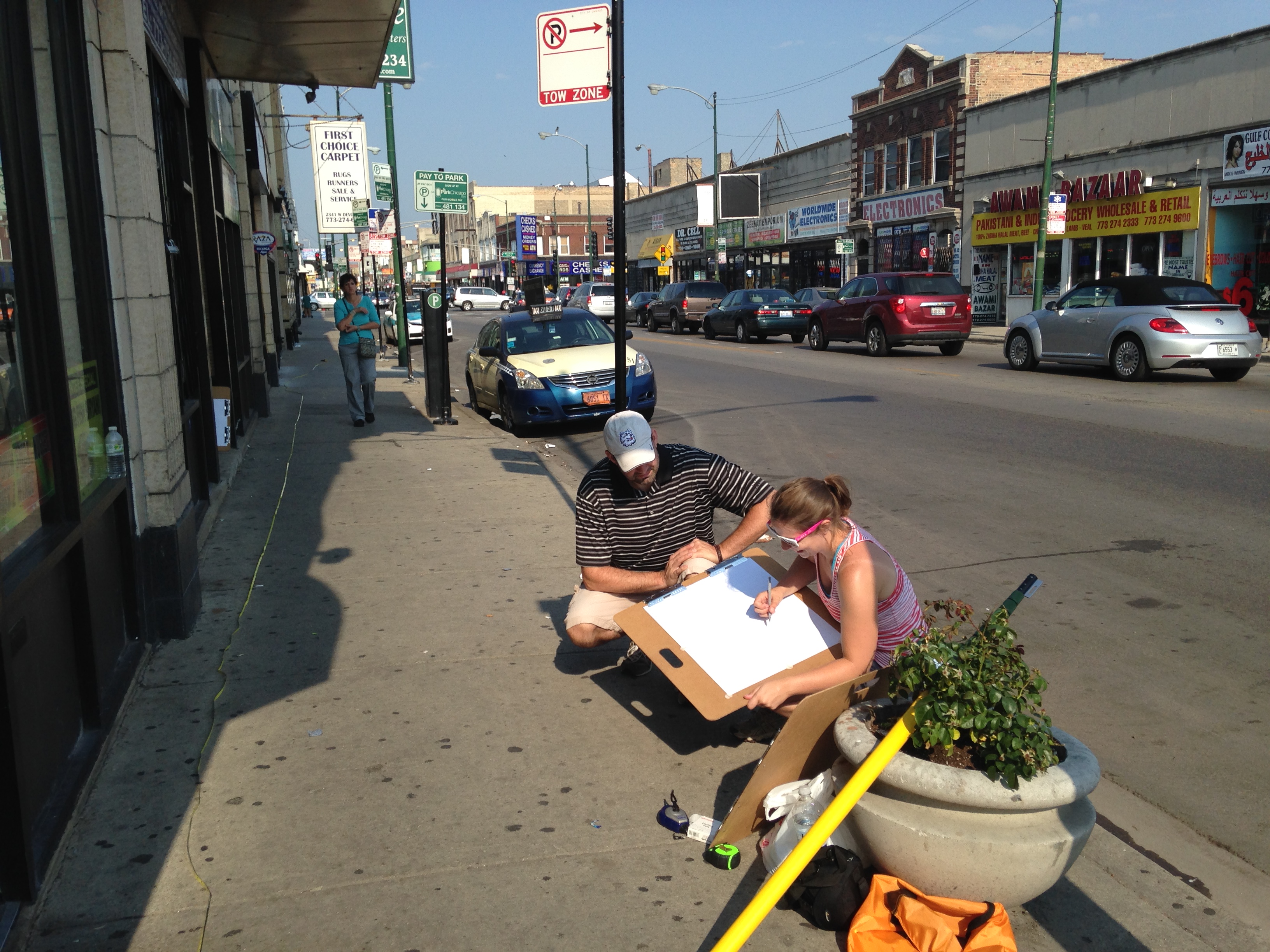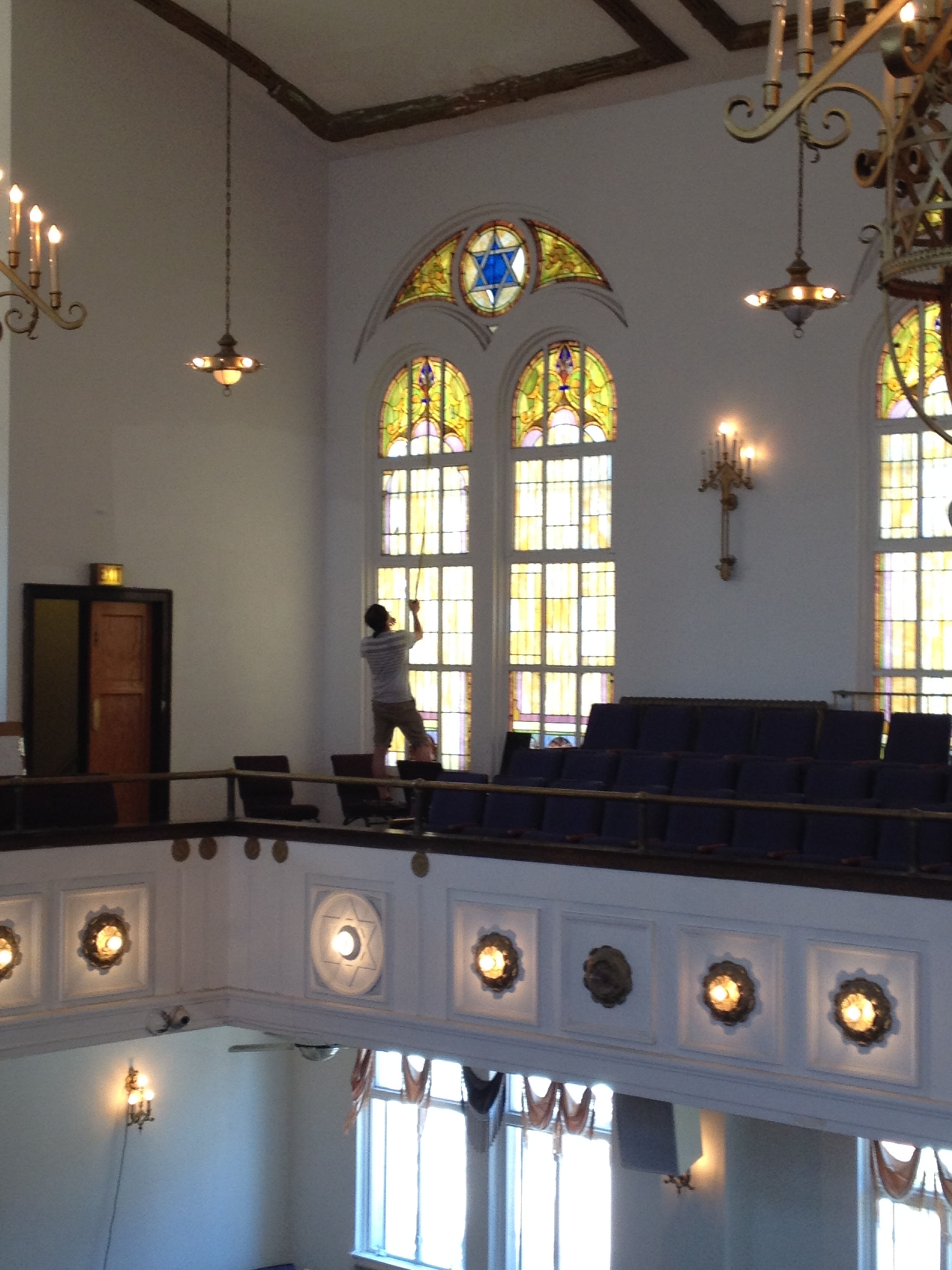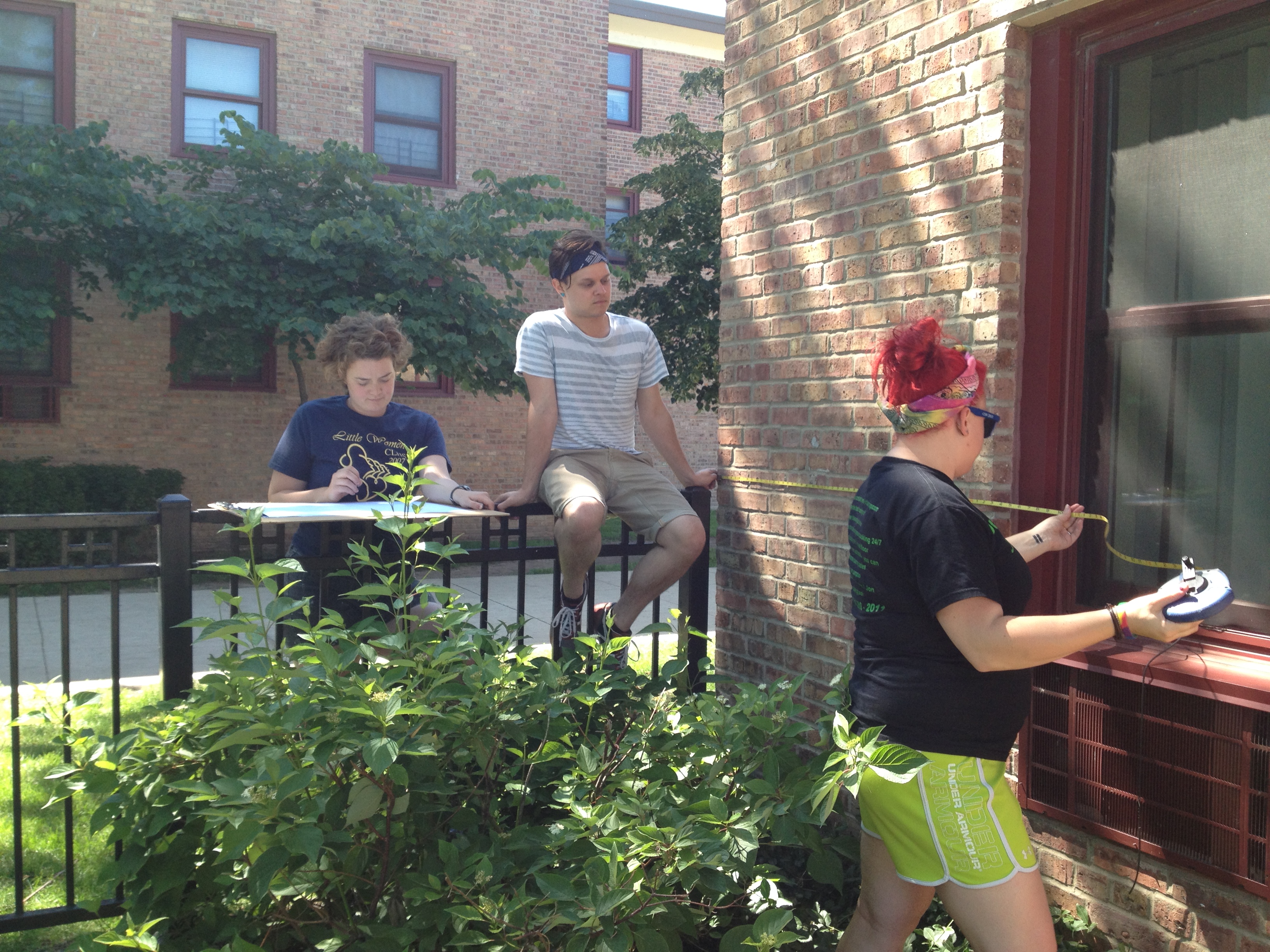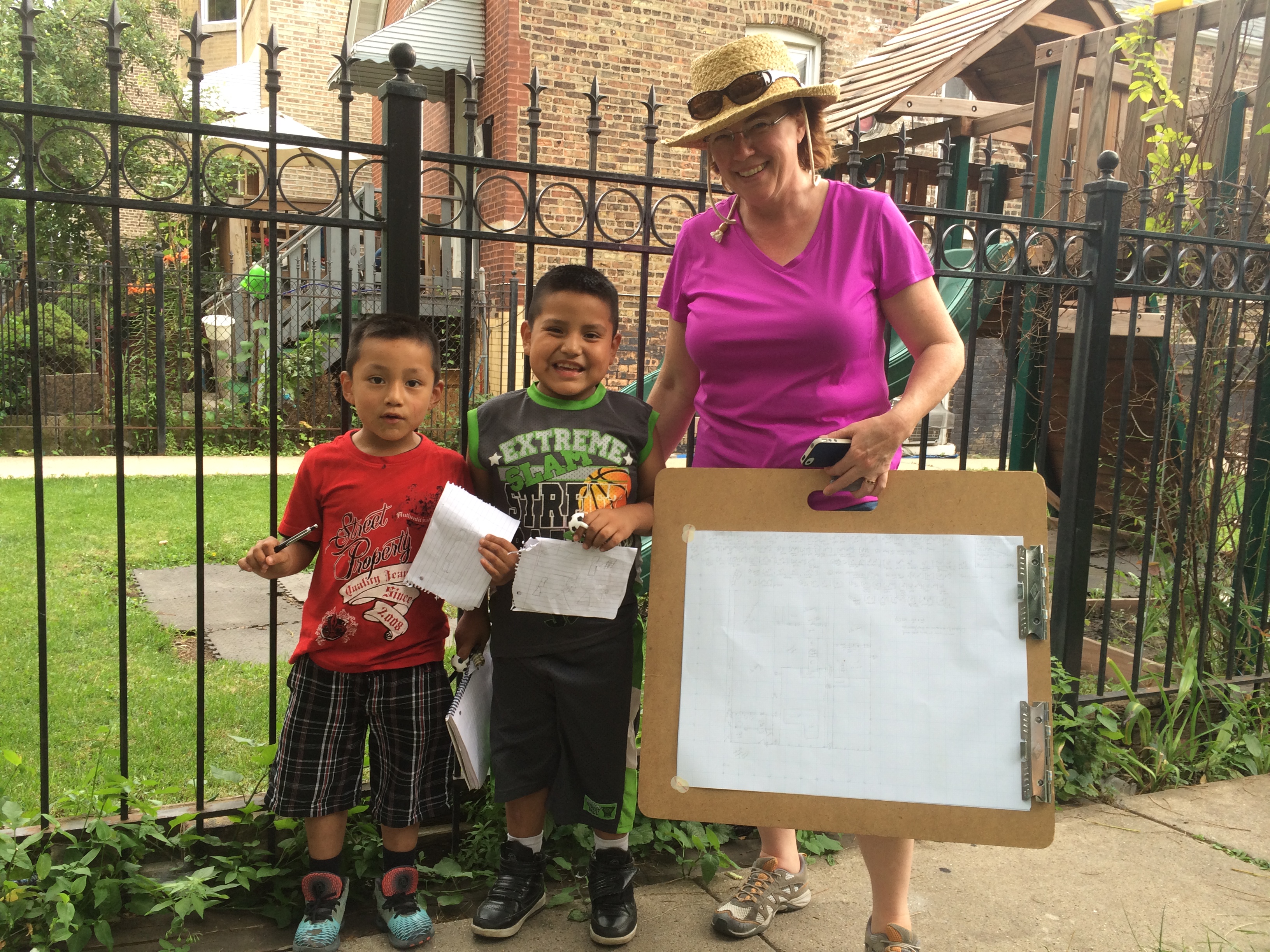by Virginia Price
The close scholarship of practice that the VAF describes as “fieldwork” underpins much of the research VAF members practice as they work through images, objects, buildings and landscapes to better understand the past. Details of construction provide clues to a building’s story, while systematic assessments of fabric and form give structure to that story. This material evidence is often presented in scaled drawings, particularly if one site is the subject of study. When a neighborhood is the subject, the buildings’ relationships to each other, within the block, and to the street become the canvas. Settlement patterns as well as specific materials, decorative features, and plans examined together lend insights into a city’s social spaces. Aerial photography and maps are keys to viewing this kind of setting. These comprehensive pictures of place can be augmented by field drawings of specific buildings that are illustrative of the larger architectural landscape.[1]
Field research precedes the annual VAF conference and distinguishes the conference’s tour program. VAF Chicago is no exception. While the VAF now offers support for individual fieldworkers through the Ridout Fieldwork Fellowship, it is the VAF’s continued commitment to an initiative in support of fieldwork for upcoming conferences that brought several VAFers to the Windy City last summer. The fieldwork initiative pulled an impressive group together. Becky Sheppard, Director of the Center for Historic Architecture and Design (CHAD) at the University of Delaware, led the way with assistance from Gretchen Buggeln from Valparaiso University, Andrew Sandoval-Strausz from the University of New Mexico, and Arijit Sen from the University of Wisconsin, Milwaukee.
Wi th characteristic aplomb and good humor, Becky’s team ventured into the sanctuary, synagogue and streets of several Chicago neighborhoods. Guided by Gretchen, they zigzagged north, west, and south of the “Loop,” meaning the elevated train tracks that loop through the city’s downtown and give the area its vernacular. Outside the Loop, they met on street corners on Devon Avenue, working with Arijit Sen and finding culinary treats (fig. 1). They re
th characteristic aplomb and good humor, Becky’s team ventured into the sanctuary, synagogue and streets of several Chicago neighborhoods. Guided by Gretchen, they zigzagged north, west, and south of the “Loop,” meaning the elevated train tracks that loop through the city’s downtown and give the area its vernacular. Outside the Loop, they met on street corners on Devon Avenue, working with Arijit Sen and finding culinary treats (fig. 1). They re ndezvoused with Andrew Sandoval-Strausz at the landmark Arch over
ndezvoused with Andrew Sandoval-Strausz at the landmark Arch over  26th Street in Little Village (fig. 2). They made the pilgrimage to St. Michael’s and the walk to North Lawndale (fig. 3). They convened at Wentworth Gardens, a public housing development, and recorded Meyers Ace Hardware, once home to a jazz club in Bronzeville (fig. 4) They measured storefronts and screens, altar-rails and alleys, floor plans and fencing, and tasted some of what Chicago has to offer (fig. 5). They took to the field, and their initiative will help guide the VAF next June.
26th Street in Little Village (fig. 2). They made the pilgrimage to St. Michael’s and the walk to North Lawndale (fig. 3). They convened at Wentworth Gardens, a public housing development, and recorded Meyers Ace Hardware, once home to a jazz club in Bronzeville (fig. 4) They measured storefronts and screens, altar-rails and alleys, floor plans and fencing, and tasted some of what Chicago has to offer (fig. 5). They took to the field, and their initiative will help guide the VAF next June.
A very special th ank you is due to our Chicago hosts. Thanks to all for embracing the empirical side of vernacular studies and for letting us crawl over your buildings: Father Andrew Torma, Flor Hernandez, Celester Gray, Annette Jones, Ms. Harris, and Dave Meyers, as well as deep gratitude to Tamsen Anderson, Matt Cole, Bill Hinchliff, Brad Hunt, Tim Samuelson, Andrew Sandoval-Strausz, and Arijit Sen for facilitating access and coordinating efforts in advance of the team’s arrival.
ank you is due to our Chicago hosts. Thanks to all for embracing the empirical side of vernacular studies and for letting us crawl over your buildings: Father Andrew Torma, Flor Hernandez, Celester Gray, Annette Jones, Ms. Harris, and Dave Meyers, as well as deep gratitude to Tamsen Anderson, Matt Cole, Bill Hinchliff, Brad Hunt, Tim Samuelson, Andrew Sandoval-Strausz, and Arijit Sen for facilitating access and coordinating efforts in advance of the team’s arrival.
VAF Chicago also acknowledges with appreciation the lodging provid ed during the fieldwork initiative by Gretchen Buggeln and through Roosevelt University.
ed during the fieldwork initiative by Gretchen Buggeln and through Roosevelt University.
And, in closing, an immeasurable thank you is due to VAFers Gretchen Buggeln, Michael Emmons, Meg Hutchins, Travis Olson, Cate Morrissey, Emily Royer, Andrew Sandoval-Strausz, Amy Schachman, Arijit Sen, and Becky Sheppard for going in the field and Out of the Loop. Their fieldwork is a signature of the VAF and a hallmark for VAF Chicago.
[1] This introduction to fieldwork was taken from https://www.vafweb.org/Fieldwork-Training to provide a context for the fieldwork done for VAF Chicago by VAFers from the University of Delaware and Valparaiso University in addition to that done by Arijit Sen on Devon Avenue and Andrew Sandoval-Strausz in Little Village.